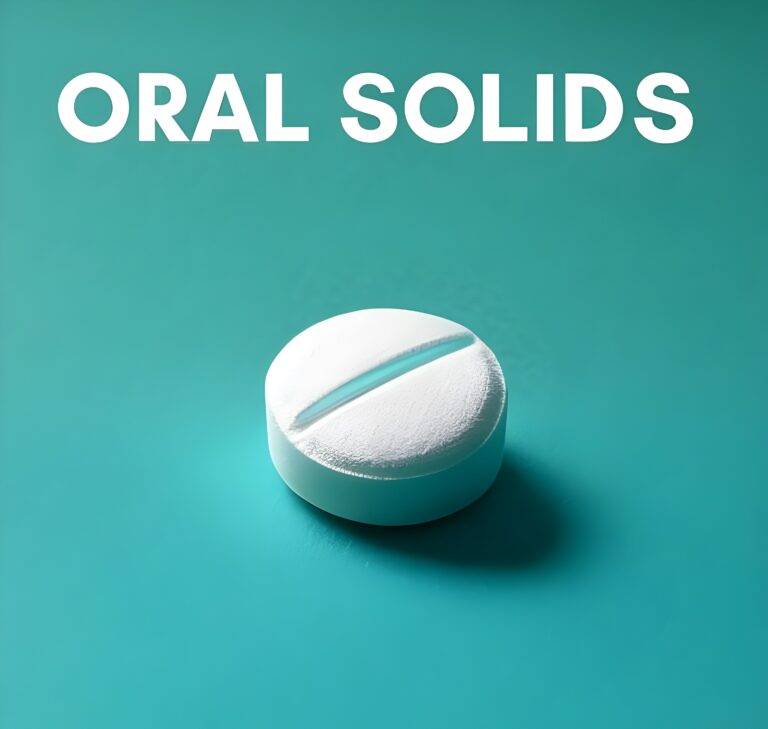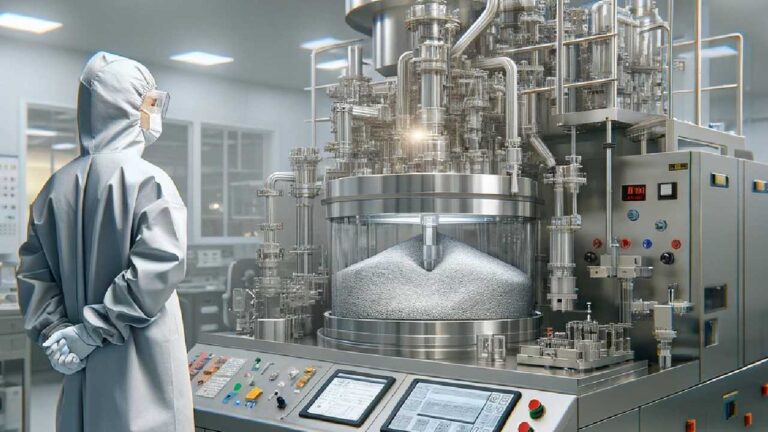The challenge of enhancing the bioavailability of poorly water-soluble drugs remains a significant hurdle. Poor water solubility of many drugs limits their absorption in the gastrointestinal tract, leading to reduced bioavailability and, consequently, diminished therapeutic efficacy.
Nanosizing and bead milling can address this issue. Nanosizing refers to the process of reducing the particle size of drug compounds to the nanometer scale typically between 100-200 nm while Bead milling, on the other hand, is a technique used to achieve nanosizing. It involves the use of milling media, such as small beads, to grind the drug particles into finer sizes. Bead milling is highly efficient and can produce uniformly sized nanoparticles, which is crucial for consistent drug performance and stability.
We leverage these advanced methodologies to ensure optimal therapeutic outcomes. Our approach involves a thorough understanding of the physicochemical properties of the drug compounds and the selection of the most appropriate nanosizing and bead milling techniques.
Key Services Offered for Nanosizing
- Nanosizing Techniques: We use various nanosizing techniques, including high-pressure homogenization, wet media milling, and sonication. These techniques reduce the particle size of the API to the sub-micron range, enhancing its dissolution rate and bioavailability.
- Formulation Development: Hycon scientists work closely with pharmaceutical companies to develop robust and scalable formulations that incorporate nanosized APIs. This includes pre-formulation studies, excipient compatibility testing, and optimization of the drug delivery system.
- Analytical Testing: Comprehensive analytical testing is essential to ensure the quality, safety, and efficacy of nanosized finished dosage forms. Additionally we provide in-house analytical services, including method development, validation, and stability testing.
- Clinical Trial Manufacturing: Hycon supports the production of clinical trial materials, ensuring that the investigational products meet regulatory standards and are available in sufficient quantities for clinical studies.
- Commercial Manufacturing: Once a drug product receives regulatory approval, Hycon scales up production to meet commercial demand. This involves large-scale manufacturing, packaging, and distribution.
Advantages of Nanosizing for Finished Dosage Forms
- Enhanced Bioavailability: Nanosizing significantly increases the surface area of the API, leading to improved dissolution rates and enhanced bioavailability. This is particularly beneficial for poorly water-soluble drugs.
- Improved Drug Delivery: Nanosized APIs can be incorporated into various drug delivery systems, including oral, parenteral, and topical formulations. This versatility allows for the development of innovative and effective drug products.
- Reduced Dosage Requirements: Enhanced bioavailability often results in reduced dosage requirements, minimizing potential side effects and improving patient compliance.
- Flexibility in Formulation: Nanosizing allows for greater flexibility in formulation development, enabling the creation of various dosage forms, including tablets, capsules, injectables, and topical formulations.
Types of Finished Dosage Forms for Nanosized Drugs
- Solid Dosage Forms: Tablets and capsules are the most common solid dosage forms for nanosized drugs. They offer convenience, stability, and precise dosing. CDMOs provide expertise in the formulation and manufacturing of various solid dosage forms, including immediate-release, controlled-release, and orally disintegrating tablets.
- Semi-Solid Dosage Forms: These include creams, ointments, gels, and suppositories. Semi-solid dosage forms are used for topical and rectal administration. CDMOs offer formulation development and manufacturing services for a wide range of semi-solid products.
- Liquid Dosage Forms: Solutions, suspensions, and emulsions fall under this category. Liquid dosage forms are used for oral, parenteral, and topical administration. CDMOs provide expertise in the formulation and sterile manufacturing of liquid dosage forms.
- Injectable Dosage Forms: Injectable products, including vials, ampoules, and pre-filled syringes, require stringent manufacturing conditions to ensure sterility and stability. CDMOs offer specialized facilities and expertise in the production of injectable dosage forms.
Nanosizing and Beadmilling: Advanced Techniques for Enhanced Drug Delivery
Bottom-Up Approach
The bottom-up approach involves the construction of nanoparticles from molecular or atomic precursors, allowing for the precise creation and assembly of particles from the smallest units. This method includes techniques such as controlled precipitation, solvent evaporation, supercritical fluid technology, and spray drying. Controlled precipitation involves the reaction of dissolved substances to form solid nanoparticles, which can be precisely controlled to achieve the desired particle size and distribution. Solvent evaporation, on the other hand, entails dissolving the drug in a volatile solvent and then evaporating the solvent to leave behind finely dispersed nanoparticles. Supercritical fluid technology utilizes supercritical fluids, which are substances at a temperature and pressure above their critical point, to dissolve and then precipitate nanoparticles under controlled conditions. Spray drying involves spraying a solution or suspension into a hot drying medium, leading to the rapid evaporation of the solvent and the formation of dry nanoparticles. These techniques collectively allow for precise control over particle size and distribution, making them ideal for the formulation of highly specific drug delivery systems that can target particular areas of the body or release the drug in a controlled manner over time.
Top-Down Approach
In contrast, the top-down approach involves the mechanical reduction of larger particles into nanosized particles, often through high-energy processes. This approach includes techniques such as high-pressure homogenization, microfluidization, sonication, and wet media milling. High-pressure homogenization forces a suspension through a narrow gap at high pressure, causing the particles to break down into nanosized fragments due to shear forces and impact. Microfluidization employs high shear rates and impact forces to achieve a similar reduction in particle size. Sonication uses ultrasonic waves to agitate the particles in a suspension, leading to their breakdown into smaller sizes through cavitation and shear forces. Wet media milling, also known as bead milling, involves the use of milling media such as beads to grind larger particles into nanosized ones in the presence of a liquid. The top-down approach is particularly effective for drugs that are poorly soluble in both aqueous and organic media, as it does not require the use of solvents, which can sometimes complicate the formulation process or introduce impurities. This method is advantageous for producing nanosized particles of drugs that are otherwise difficult to process through conventional means.
Overall, the choice between bottom-up and top-down approaches depends on various factors, including the properties of the drug, the desired particle size and distribution, and the intended application of the nanoparticulate formulation. By carefully selecting the appropriate nanosizing technique, pharmaceutical scientists can enhance the solubility, dissolution rate, and bioavailability of poorly water-soluble drugs, leading to more effective and reliable therapies.
Beadmilling: Precision and Efficiency
Beadmilling, also known as stirred media milling, is a top-down process that utilizes high shear-impact forces to achieve particle size reduction. This technique involves the dispersion of drug particles in a liquid medium, where they are subjected to intense collision forces generated by grinding beads. The choice of beads, typically made from materials such as zirconia, plays a crucial role in determining the efficiency and outcome of the milling process.
Process Parameters And Optimization
The bead milling process is highly dependent on several critical parameters, each playing a pivotal role in the success of the milling operation. These parameters include the size of the beads, the material composition of the beads, the milling speed, and the duration of the milling process. The optimization of these parameters is essential to achieve the desired particle size and distribution, which directly impacts the quality and performance of the final product. At Hycon, we employ advanced modeling techniques to meticulously predict and simulate milling kinetics. This allows for precise control over the milling process, ensuring consistent and reproducible results across different scales of production, from small laboratory batches to large-scale industrial manufacturing.
Applications And Benefits
Beadmilling offers several distinct advantages that make it a preferred method for particle size reduction in the pharmaceutical industry. One of the primary benefits of bead milling is its high productivity, enabling the rapid processing of large quantities of material. Additionally, the process is highly scalable, allowing for seamless transition from small-scale laboratory experiments to full-scale industrial production without compromising on efficiency or quality. Another significant advantage is the ability to produce nanocrystalline suspensions with enhanced stability. These suspensions exhibit improved dissolution rates and bioavailability, making them ideal for various drug delivery systems, including oral, parenteral, and topical applications.
Furthermore, the use of bead milling facilitates the incorporation of poorly soluble drugs into various dosage forms, thereby expanding the scope of pharmaceutical development. This is particularly important in the formulation of modern drugs, where solubility and bioavailability often pose significant challenges. By effectively reducing the particle size to the nanoscale, bead milling enhances the solubility and dissolution rate of these drugs, leading to improved therapeutic efficacy and patient outcomes.
Related Services





































